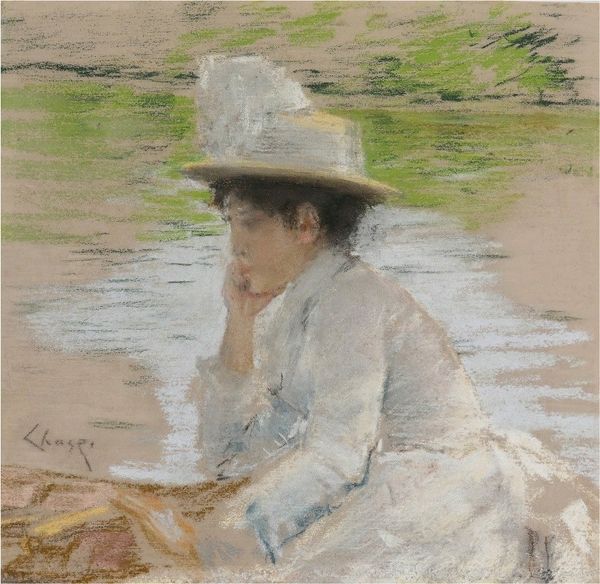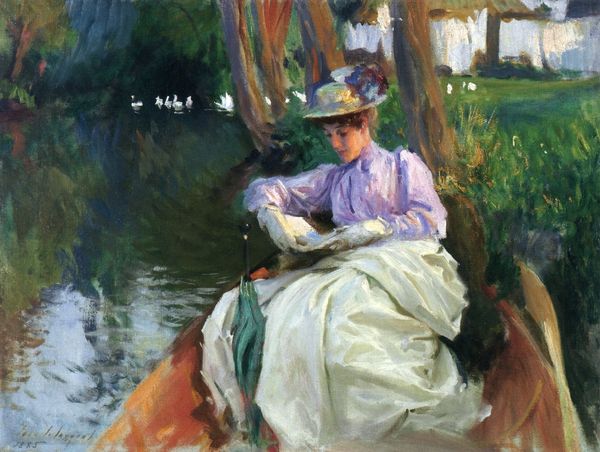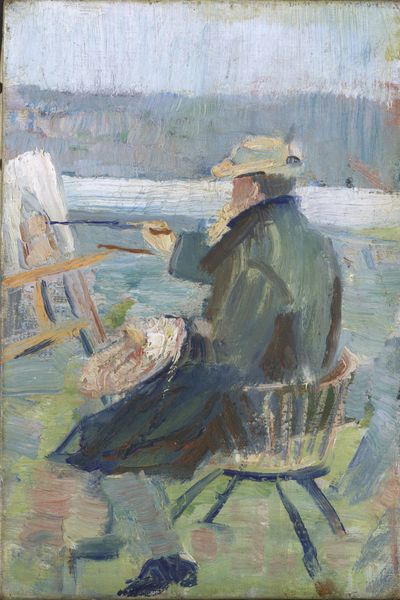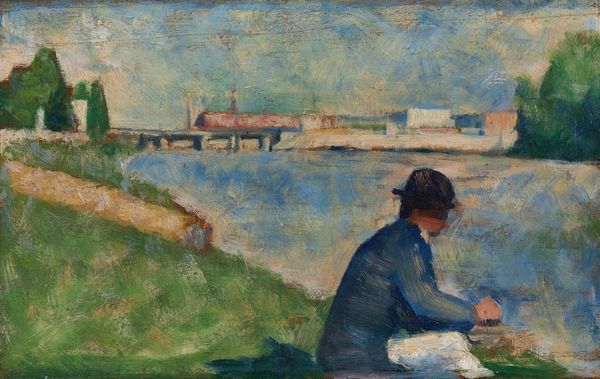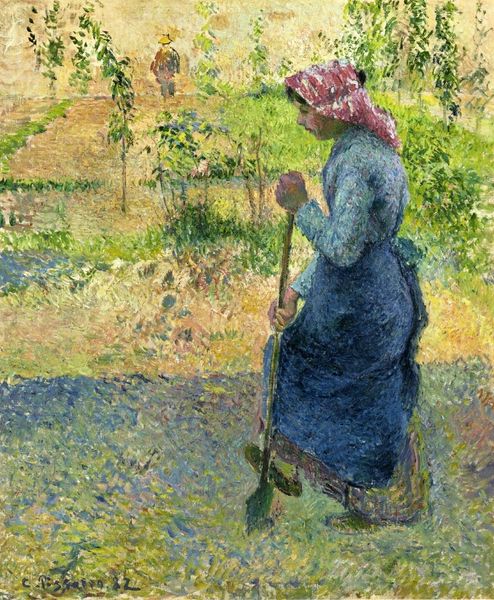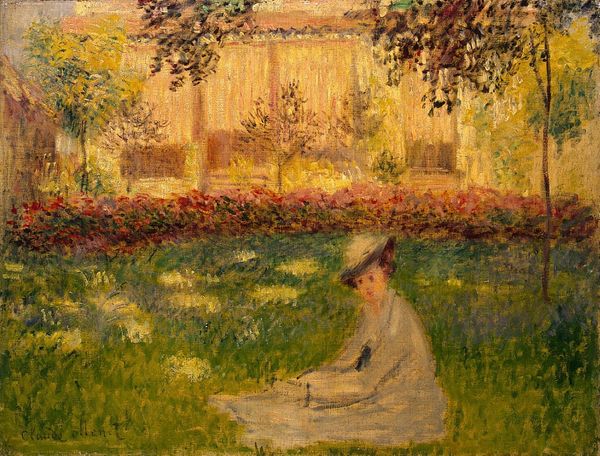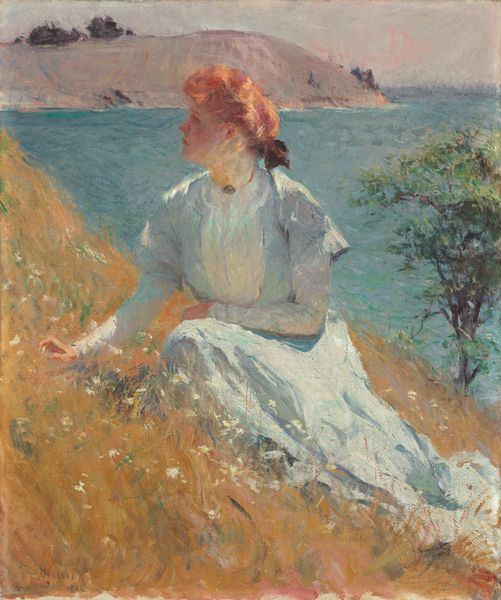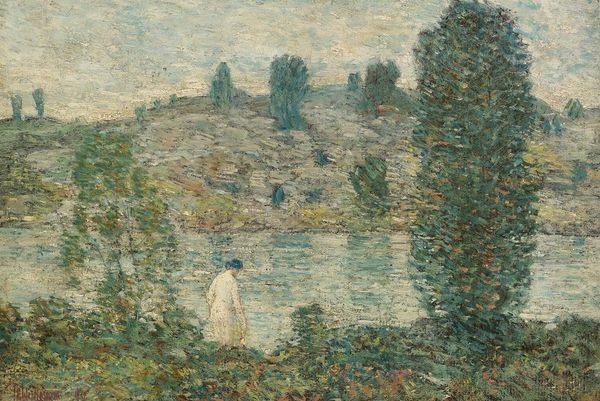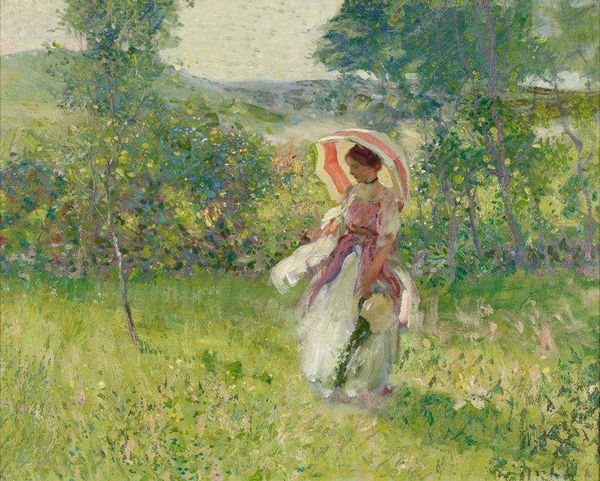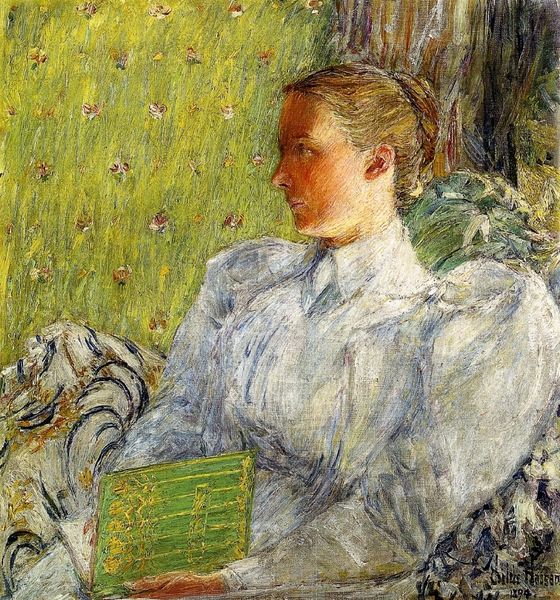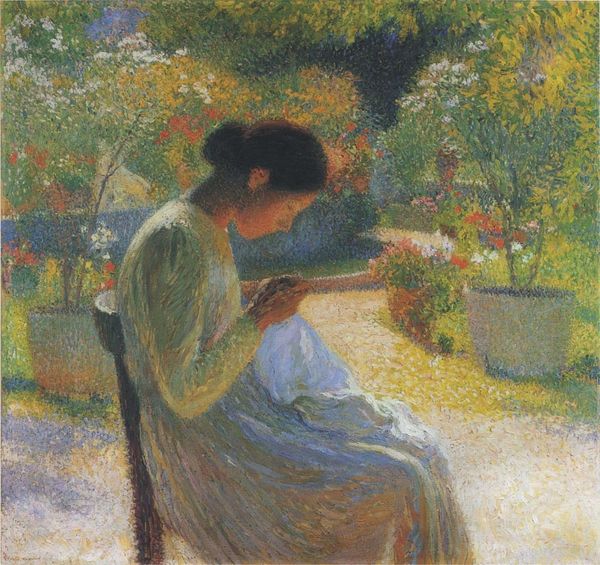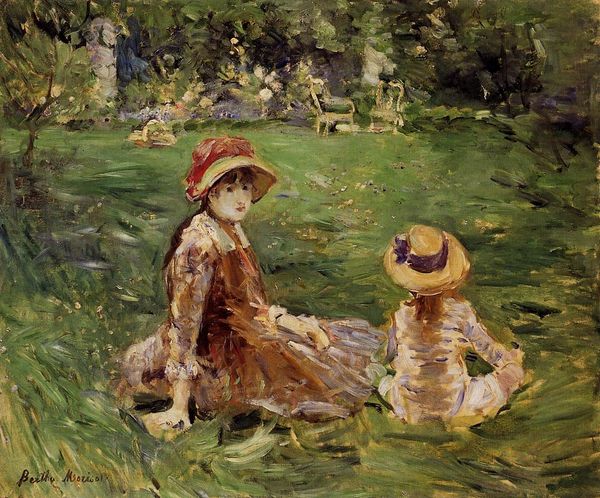
Copyright: Public domain
Editor: Here we have Theodore Robinson's "La Roche Guyon," created in 1891 using oil paint, very much en plein air. The first thing I notice is the intimacy of the scene – a woman reading by the river. What do you see when you look at this piece? Curator: I see the product of a particular artistic labor shaped by readily available materials and class structure. Consider Robinson, an American Impressionist, working "en plein air." The availability of pre-mixed oil paints in tubes had democratized painting, making it more portable, allowing for this immediate capture of light and atmosphere. Editor: So the *how* it was made is as important as the *what*? Curator: Precisely. The portability affects not just the ease of production, but the very subject matter and aesthetic choices. Who is this woman reading? How does her social standing allow for this leisurely activity and affect Robinson's portrayal? What book do you imagine she might be reading, and is this a mass produced book for the growing reading classes? What choices did Robinson make when considering which brushes to use and which canvas sizes he'd be willing to invest in? Editor: I never considered the cost of the canvas as informing artistic expression. Curator: These details about process shape not just the final artwork, but also the way we perceive its place in the world, challenging our typical distinction between high art and craft. It causes me to consider if her dress was specifically made and bought for her and the growing textile industries in France at the time. Editor: This makes me think about how access to materials impacts what art is made and who gets to make it. Thanks! Curator: Yes! Examining the material conditions gives us an entirely new lens through which to appreciate the artistry.
Comments
No comments
Be the first to comment and join the conversation on the ultimate creative platform.
